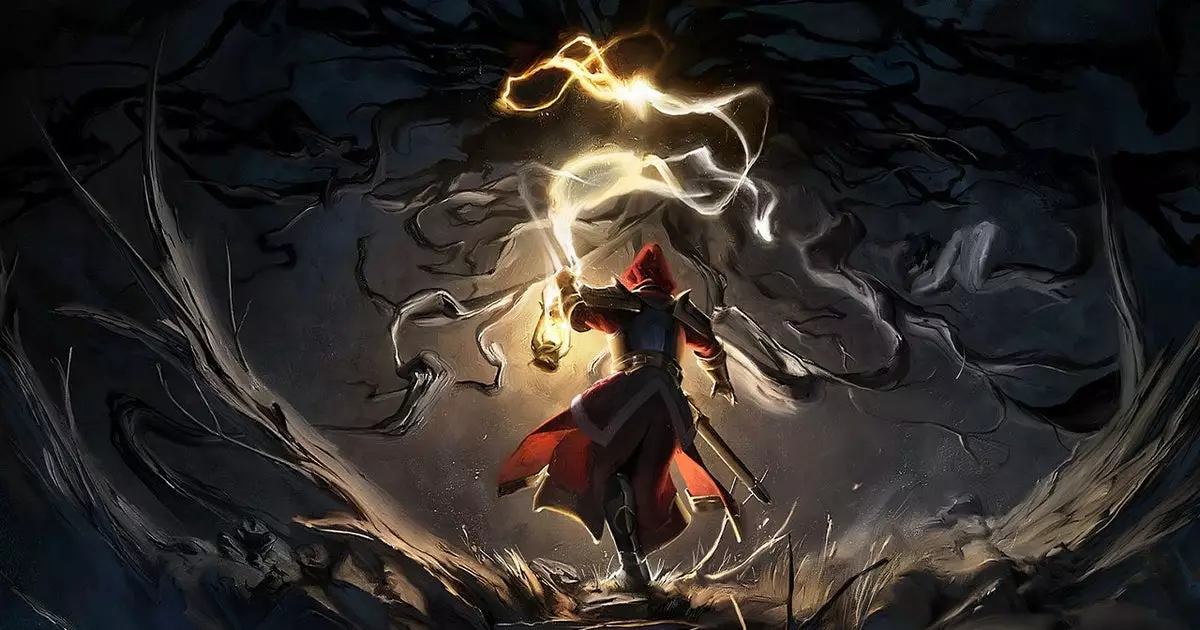Upon the announcement of *Mandragora: Whispers Of The Witch Tree*, the initial anticipation was shadowed by uncertainty. At first glance, it appeared to be another entry into the crowded genre of dark fantasy. The gaming community has seen a plethora of side-scrolling titles drenched in darkness—think *Castlevania* and *Hollow Knight*. Yet, buried beneath this exterior lies a narrative-driven experience, enriched by compelling character development and immersive gameplay mechanics.
What truly draws players into Mandragora is the captivating storytelling. Set against the backdrop of an apocalyptic realm ruled by a tyrannical King Priest, players are thrust into a world where moral ambiguity reigns and witch hunts are as prevalent as the looming threat of nightspawn. The protagonist, an inquisitor of the Crimson City, finds themselves embroiled in the tragic fate of tortured witches, ultimately leading them to uncover layers of intrigue and dark secrets that unfold as the story progresses.
A Distinctive Art Direction
Mandragora’s visual style is another aspect that sets it apart from its peers. The character portraits have a unique, almost grotesque quality, evoking the feeling of horror coupled with distorted beauty. Critics might argue that these visual choices don’t resonate with everyone, yet they encapsulate the game’s thematic essence. The twitching, glare-filled portraits seem to animate the very turmoil that the characters face, immersing players deeper into the psychological tension of the narrative.
As players traverse through the ominous corridors of Crimson City, they encounter a variety of NPCs who add depth to the world. Their interactions are not mere background chatter; they enrich the storytelling by weaving complexity into seemingly mundane moments. The game skillfully fuses character development with gameplay, allowing players to witness the repercussions of their actions firsthand, such as the reaction of a merchant berating the protagonist for destroying their property before backpedaling upon discovering their authority. This blend of humor and gravity resonates, making the world feel lived-in and authentic.
A Gameplay Experience that Balances Action and Story
Despite the rich narrative, gameplay remains the heart of Mandragora. The controls prioritize responsive mechanics, which are critical as players navigate through intricate, labyrinthine levels. The game’s effort to balance action-RPG elements with a keen focus on story is commendable. Players can engage in thrilling combat, employing a combination of stamina management, evasive maneuvers, and clever usage of abilities to vanquish enemies.
However, the game’s animations can sometimes feel a bit stilted, presenting a stark contrast to the dynamic gameplay. Some players may find this jarring, yet it also adds an element of charm to the overall experience. The combination of familiar elements—such as customizable character builds, diverse weaponry, and various class mechanics—create a formula that feels both fresh and nostalgic to seasoned gamers.
Exploring Depth through Level Design
What calls to gamers even more earnestly than the combat is the intricately designed levels. Mandragora’s environments invite exploration, with hidden paths and concealed treasures that reward curiosity. Fast travel points, reminiscent of those in *Dark Souls*, provide intuitive navigation while allowing players to fully appreciate the sprawling, interconnected world.
The design encourages players to think critically about their surroundings. Hidden high platforms and secret entrances promote a sense of discovery that can often be lacking in other titles. Every nook and cranny is a potential gateway to new experiences, begging to be explored. Each exploration can be satisfying in its own right, layering the narrative with new insights and character backstories.
An Engrossing Narrative Experience
Ultimately, *Mandragora: Whispers Of The Witch Tree* provides a refreshing take on the action-RPG genre. While it may share surface-level traits with numerous other games in the dark fantasy domain, its commitment to storytelling elevates it above the competition. The game’s focus on character interactions, world-building, and rich lore creates an engaging tapestry that invites players to lose themselves in the unfolding narrative.
Even as the final product rapidly approaches release, one cannot help but feel that this title may be a sleeper hit, a diamond in the rough in a genre often dominated by repetitive mechanics. While many games rely heavily on flashy combat, Mandragora’s ambition lies in its intertwining of story and gameplay, crafting an experience that is both thrilling and emotionally resonant. As the journey unfolds, it promises to deliver not just action, but a nuanced exploration of morality, duty, and the human condition in the face of darkness.

